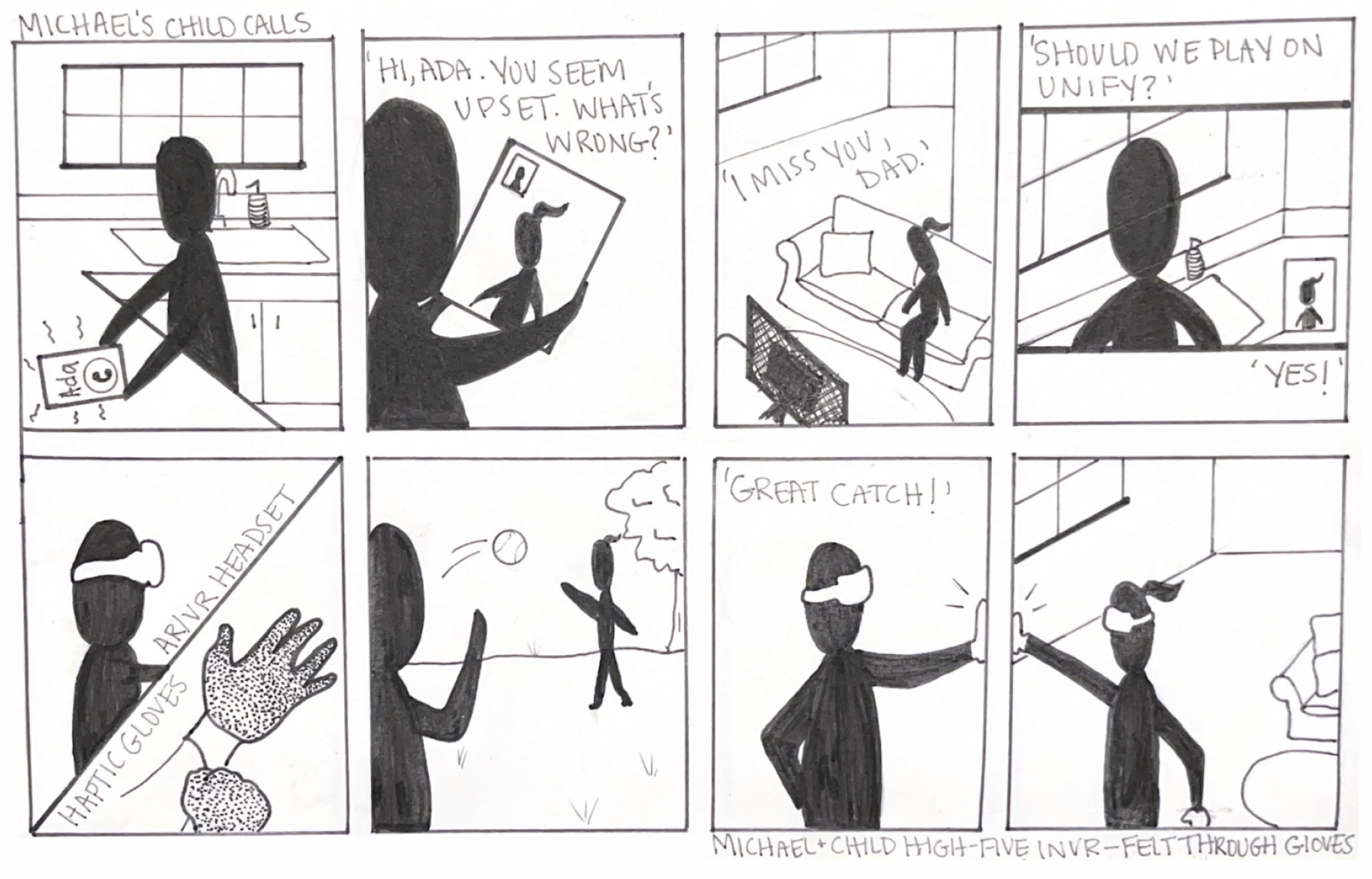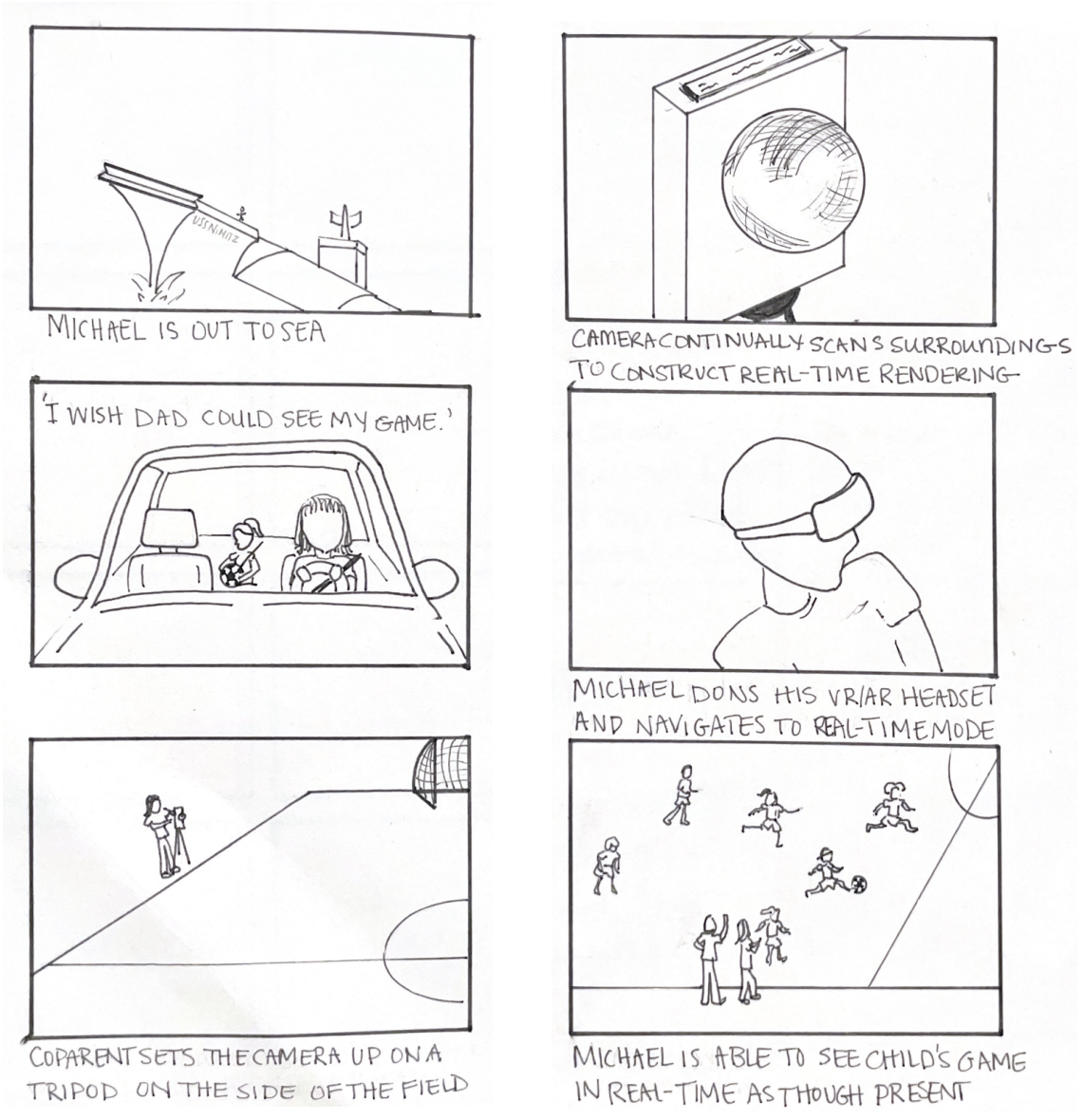Storyboards
Storyboards A + B
Author: Hiromu Sugiyama
A: The user is a parent separated from his family due to divorce. He would like to maintain and deepen his relationship with his child from afar. In this scenario, the product includes a VR headset and hand-held sensory devices.
B: The user is a student who went away for college. She uses the product to connect with her friends and family during down-time. This scenario explores the use of communities within the platform—fluid ‘rooms’ where users come and go.
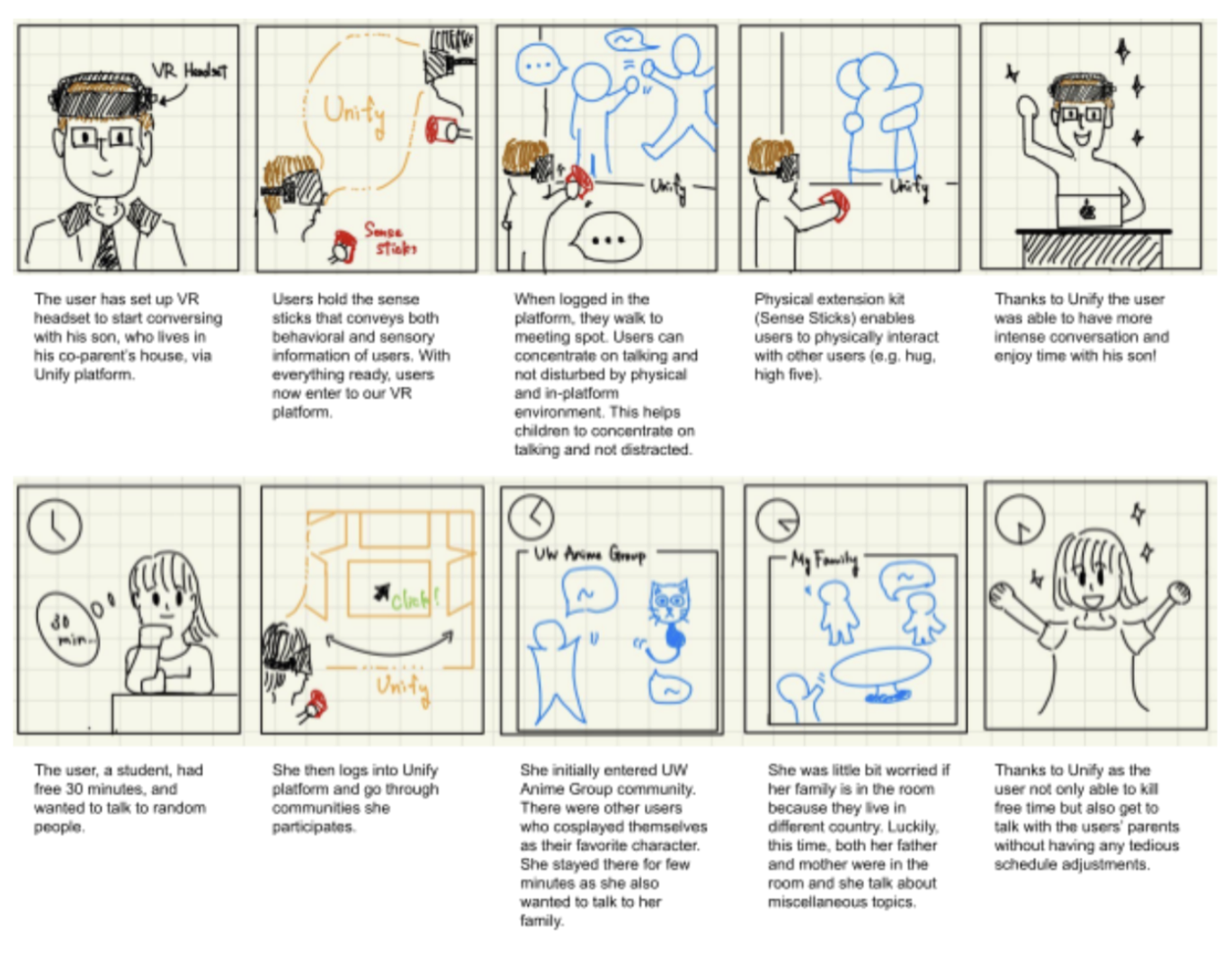
Storyboards C + D
Author: Esther Cui
C: The user is a college student living away from her friend. To connect with this friend, the user first checks to see if the friend is online (on our platform) then begins a video call. The user and friend play a game together while continuing an audio conversation. In this scenario, the product is limited to a mobile application.
D: The user is a parent living separately from their child. They use our product, a mobile application, to schedule a call to connect with each other.
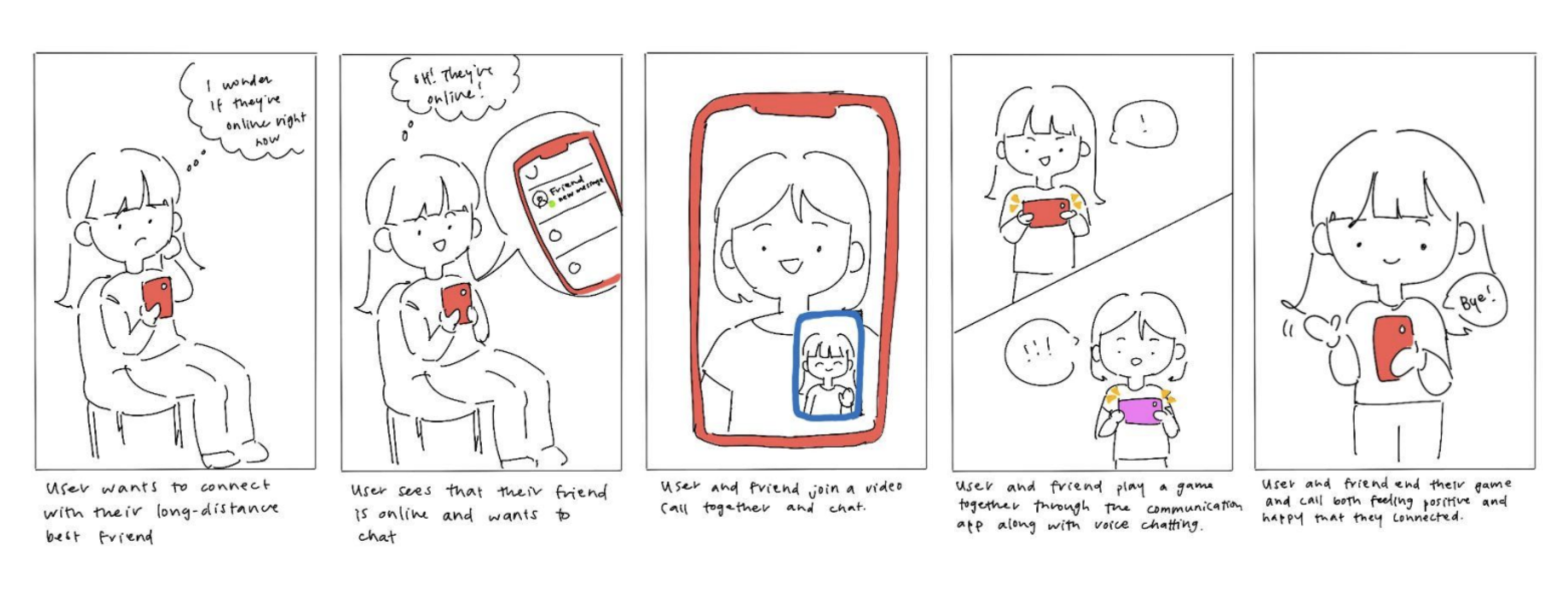
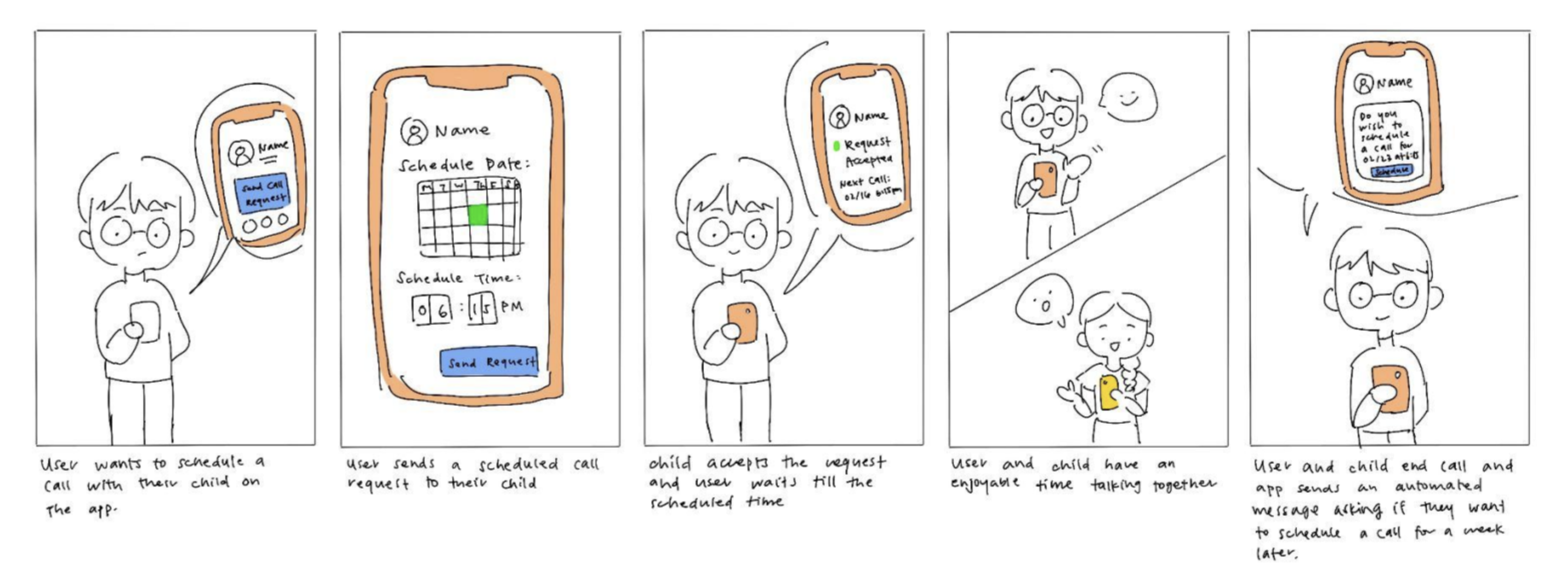
Storyboards E + F
Author: René Capella
F: This storyboard is broken into problem and solution spaces. The user is a mother on a video call with her child.
Problem: As video calls with children tend to go, the conversation starts well and toward the end becomes slightly awkward, in this case because they can’t think of anything to say.
Solution: The mother and child use our product, in this scenario AR glasses, to more naturally connect with the child. The mother is able to just ‘sit’ next to the child to provide support.
G: This storyboard is broken into problem and solution spaces: The user is an adult physically separated from a child.
Problem: The adult initiates a video call with the child. The child is initially communicative and interested, but wanders off, can no longer be seen on the screen, and is ignoring the adult. The adult feels powerless to change the situation.
Solution: The adult initiates a video call. The child’s caregiver places the phone in a pouch on the front of the child facing outwards so the adult can see directly in front of the child. There is an additional camera in the room which allows the adult to see the child in context. The adult feels more connected and engaged.
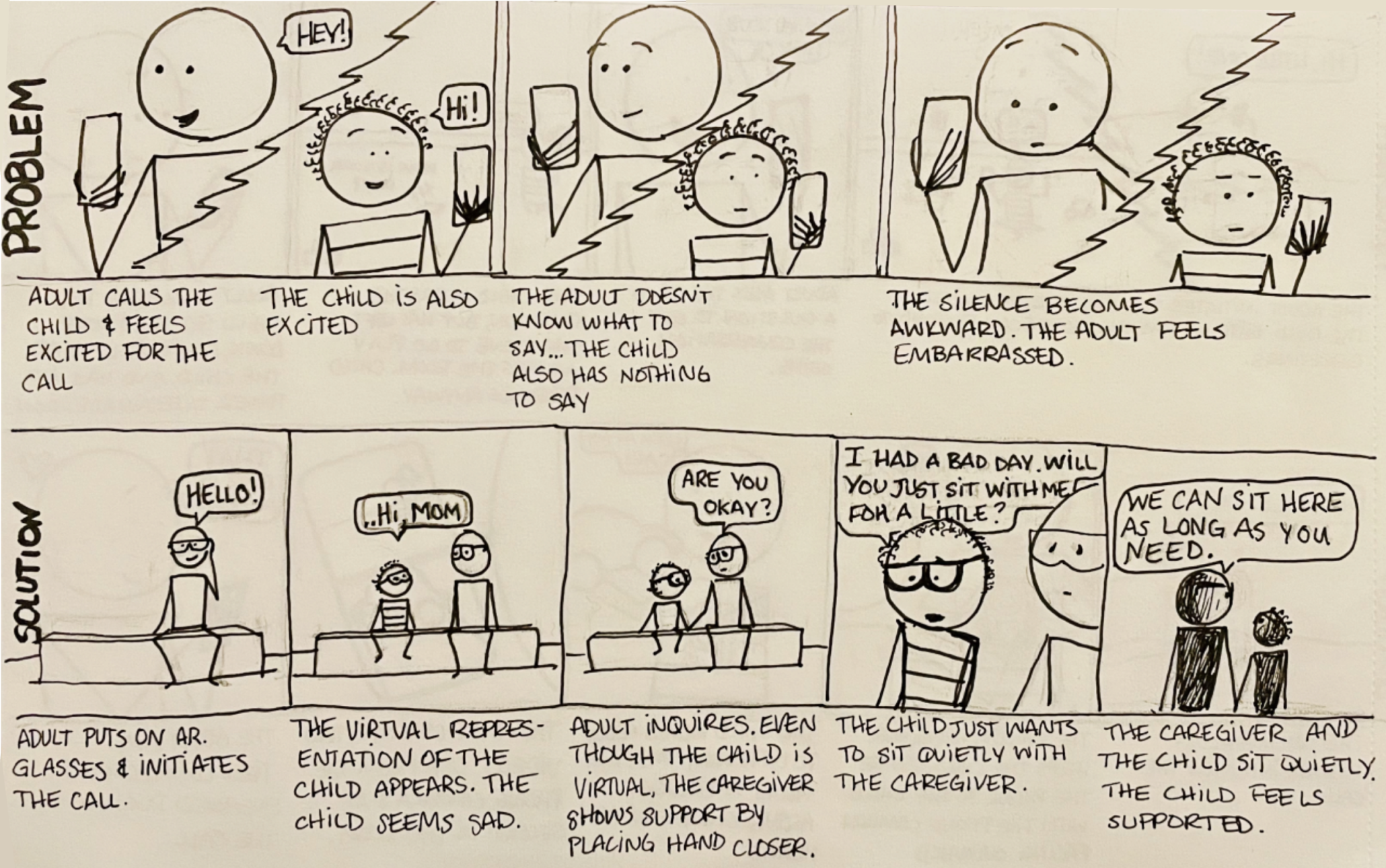
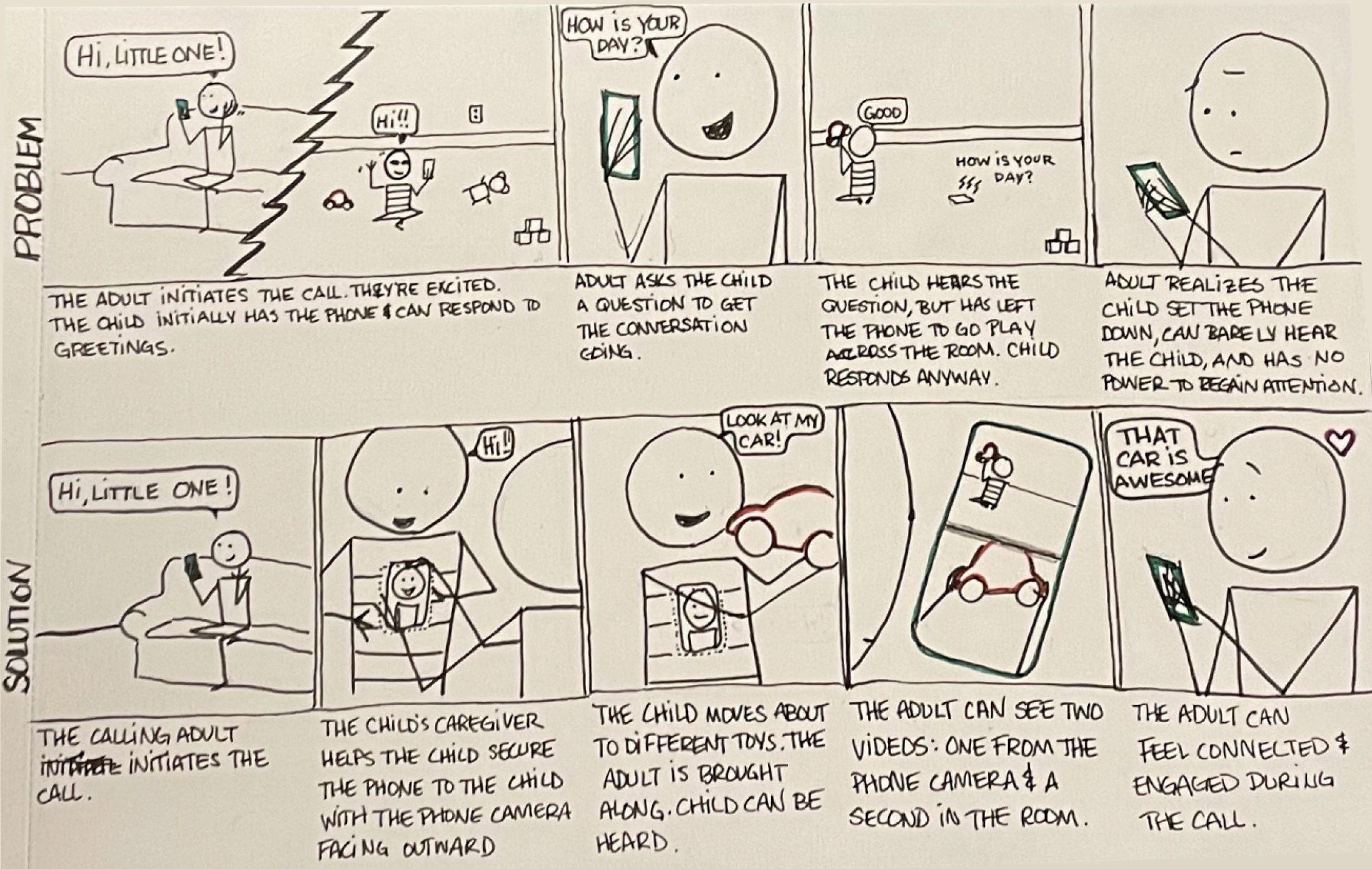
Storyboards G + H
Author: Casey Kelly
In both of the following storyboards, the user is our persona, Michael. Michael is physically separated from his child due to divorce and military stationing. Michael and his child suffer from a lack of connection through long-distance communication tools.
G: Michael receives a video call from his child. He can tell something is bothering the child from body language. The product, in this scenario AR/VR headset and haptic gloves, is used to play catch.
H. Michael’s child is sad that he cannot see her soccer game. Michael’s co-parent brings the product, in this scenario AR/VR camera for rendering and an AR/VR headset for viewing, to the game—she sets it up on the sideline to capture the game. Michael is able to see his daughter’s game in a way that feels more real than video.
